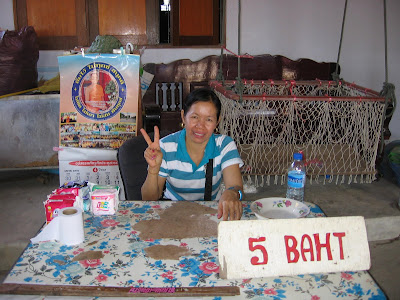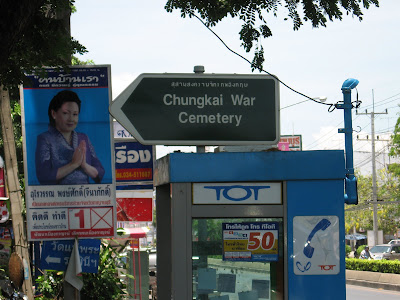Floating MarketsIt all started so early! It was over 100 km to the Floating Markets and our guide had arranged for an early pickup. So early that Lidy and I were the only partakers of breakfast in the rooftop dining room. All other residents of the hotel were still (wisely) in the land of nod!
Can I have another coffee... Please?

The road to nowhere

I always believed I should be treated like this

Another road, another white line, Where are we?

Boarding these things isn't all that easy

Our boatman gave it "the gun" and we were off!

The canals are so narrow you wonder if two boats could fit side by side

Past the white Buddha

Lidy just loves it when we go
FAST!
Taxi bike plying his trade along the narrow jettys

Coming into the market area

The floating market early morning

Confusion reigns as the landlubbers breakfast before starting their day

Peace - and will that be two tissues with your toilet?

Oh no. The bloody tourists have arrived

No, that's too much. How about dropping 5 Baht?

I should always be treated like this...

The stall holders sit cross-legged on their small craft for hours at a time

"Ram them, Mr Maryk..."

The market hots-up into a buying frenzy

"I have only Saw U in whole market!

Got it!
A a quick tune-up and a final test tune and Russell has his instrument. Now, only one potential problem remains. Can Russell get it past Australia's strict quarantine laws?

And this is how you tune it...
































































